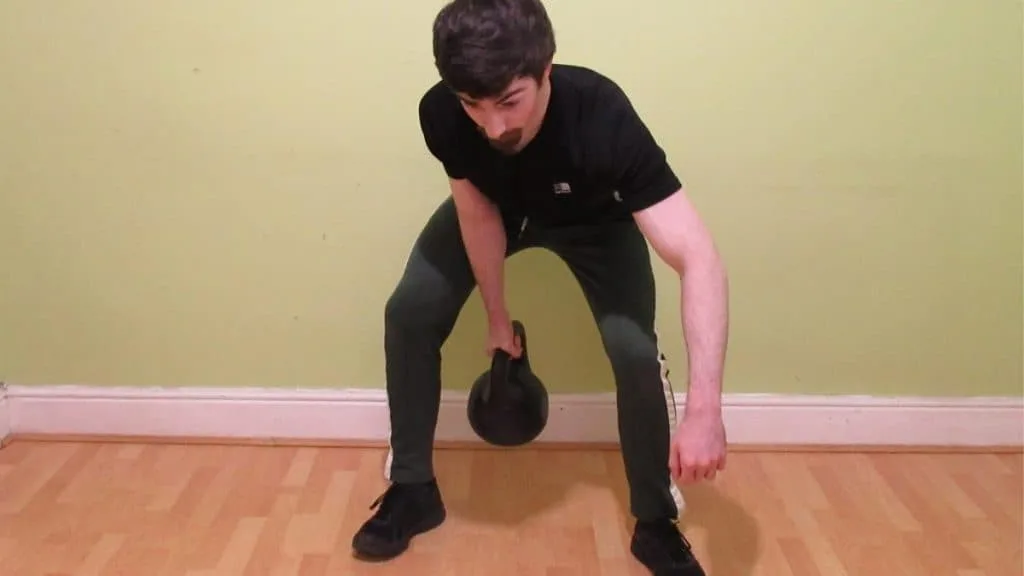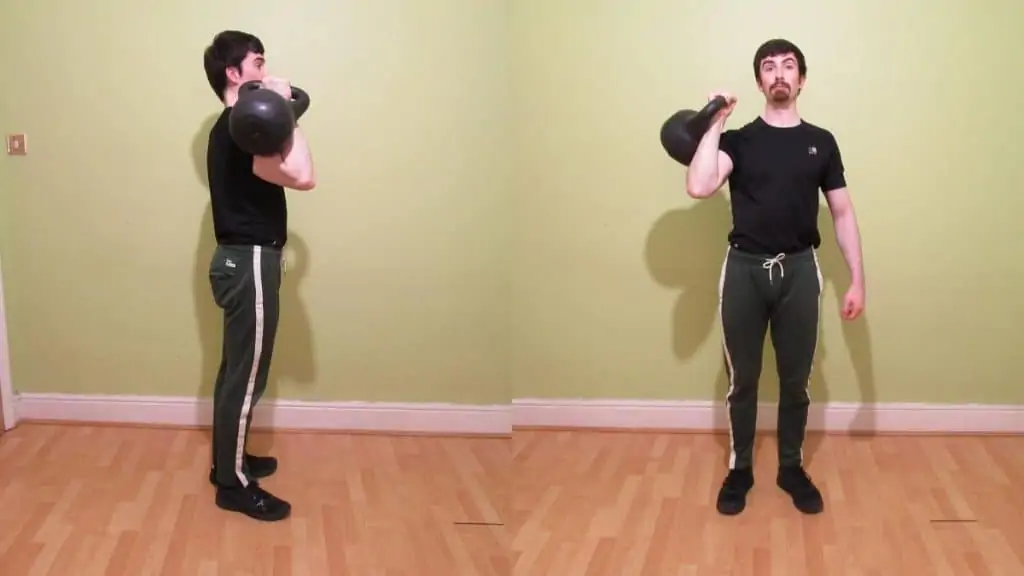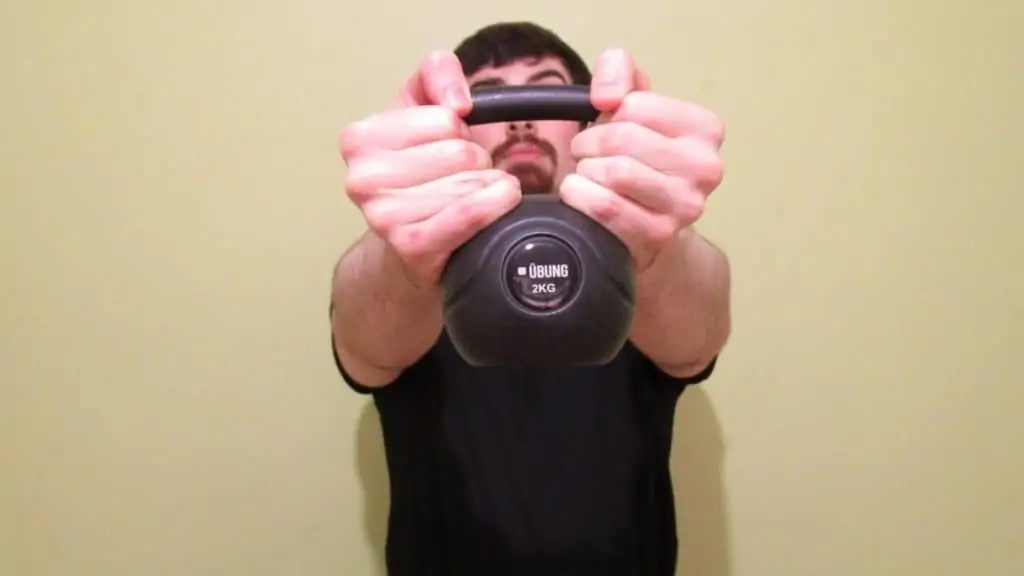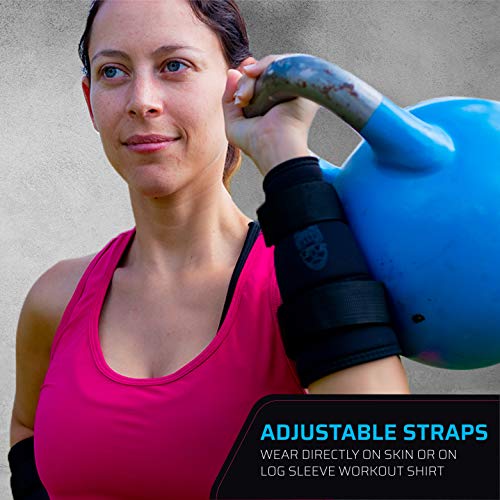The forearm bones are delicate. And when they get whacked by a kettlebell, you’re bound to feel pained. So in this article, I’m going to show you how to stop the kettlebell from hitting your forearm during cleans, snatches, etc.
I’ll offer both long-term solutions that take a bit of practice (fix your technique) as well as short-term protection methods to prevent bruising and discomfort in your upcoming training sessions. Sound good?
Let’s get into the specifics.
Related post: forearm exercises with a kettlebell
How to stop the kettlebell from hitting your forearm
Give these 5 tips a try to improve your technique and stop your forearm from getting whacked by that pesky kettlebell.
Reduce your arc

When you swing the kettlebell up, you want to keep it as close to your body as possible. Or, to put it another way, you want to minimize the arc. This is because when you swing with a great big arc, you’re essentially letting the kettlebell fall onto your forearm, which results in it smacking your wrist.
Now, I didn’t come up with this next tip. I got it from Dr. Eric St-Onge. However, it’s so good that I had to share it with you. Essentially, you want to put a basic gym towel between one elbow and your torso. Then, perform the exercise with a large arc and then with a small one.
You’ll notice that the towel stays nicely in place when you keep the kettlebell close to your body. But when your form turns sloppy, and you allow the kettlebell to fling too far away from you, you’ll notice that the towel falls on the floor.
So, work on your arc, and the discomfort will subside.
Maximize your leg drive

As I learned from Brittany van Schravendijk, you need to make the most of your leg drive during the clean if you want to avoid the kettlebell hitting your forearm. By using a powerful leg drive, you’ll have more time to slip your hand through the kettlebell from a neutral position.
On the other hand, when you use a weak leg drive and a big arc, the lack of explosiveness means that rather than “punching” your hand through the kettlebell, you’re almost doing a bicep curl which obviously lacks explosiveness compared to the punching technique.
Use an offset grip

While many of us naturally perform swings while gripping the kettlebell in the middle, this is suboptimal during snatches. Why? Because when you use a regular grip, it’s much harder to loop your hand through and receive the kettlebell in the proper position.
You can actually practice this grip without doing the whole movement to get your technique down. Place the kettlebell on the floor and practice holding it on the curved part of the bell while looping your hand though. This will make you better at receiving the kettlebell during cleans.
Don’t sleep on this because if your grip is wrong, then it’s virtually impossible to prevent the kettlebell from hitting your forearm.
Lift lighter weights

Listen, I know that the last thing you want to do is drop the weight. And since you’re most likely not a bodybuilder, you probably don’t have the worst ego lifting issues in the gym. However, even those who perform functional training and the like are still prone to lifting too much weight too soon.
While you may be able to physically get the kettlebell into the correct end position, if you can’t do it pain-free even after working on your technique, then you should probably lighten the load.
You need to be able to swing the weight up with your legs, so make sure that they’re actually strong enough to lift your desired weight.
Personally, I’d rather look “weak” for a while and get rid of the bruising than make the problem worse by cleaning with too much weight.
Protect your forearms now
You can buy special wraps for your forearms to prevent them from getting bruised and picking up knocks during training. Some wraps are obviously better than others and offer more protection, which is to say thicker fabric between your bone and the bell.
Reading the reviews of these products is also mildly entertaining because practically the only people who buy them are those who have trouble with the kettlebell hitting their wrists and forearms.
While it never hurts to protect your forearms and prevent further damage, fixing your technique is by far the best remedy for this problem. But I can completely understand if you want to use these wraps while you work on your technique or perhaps during your long-term training. After all, if you keep on whacking your wrist, then you won’t be doing any kettlebell training.
Conclusion: How to prevent the kettlebell from hitting your forearm
I hope that these tips will improve your training technique and help stop the kettlebell from hitting your forearm. I highly recommend watching the videos that I linked in this article.
Actions, as they say, often speak louder than words. So it’s best to watch someone walk you through the process of perfecting your technique.
I’ve neglected to make my own video for this problem because both Eric and Brittany already have great tutorials, so you’re in good hands with them.
References
- Brumitt, J., Gilpin, H. E., Brunette, M., & Meira, E. P. (2010). INCORPORATING KETTLEBELLS INTO A LOWER EXTREMITY SPORTS REHABILITATION PROGRAM. North American Journal of Sports Physical Therapy, 5(4), 257–265. https://www.ncbi.nlm.nih.gov/pmc/articles/PMC3096147/
- Andersen, V., Fimland, M., & Saeterbakken, A. (2019). Trunk Muscle Activity in One- and Two-Armed American Kettlebell Swing in Resistance-Trained Men. Sports Medicine International Open, 03(01), E12–E18. https://doi.org/10.1055/a-0869-7228
- Boles, C. A., Kannam, S., & Cardwell, A. B. (2000). The Forearm Anatomy of Muscle Compartments and Nerves. American Journal of Roentgenology, 174, 151–159. https://www.ajronline.org/doi/10.2214/ajr.174.1.1740151


